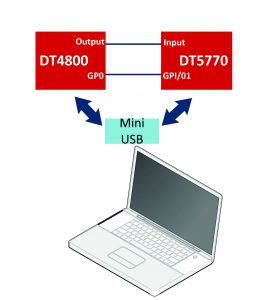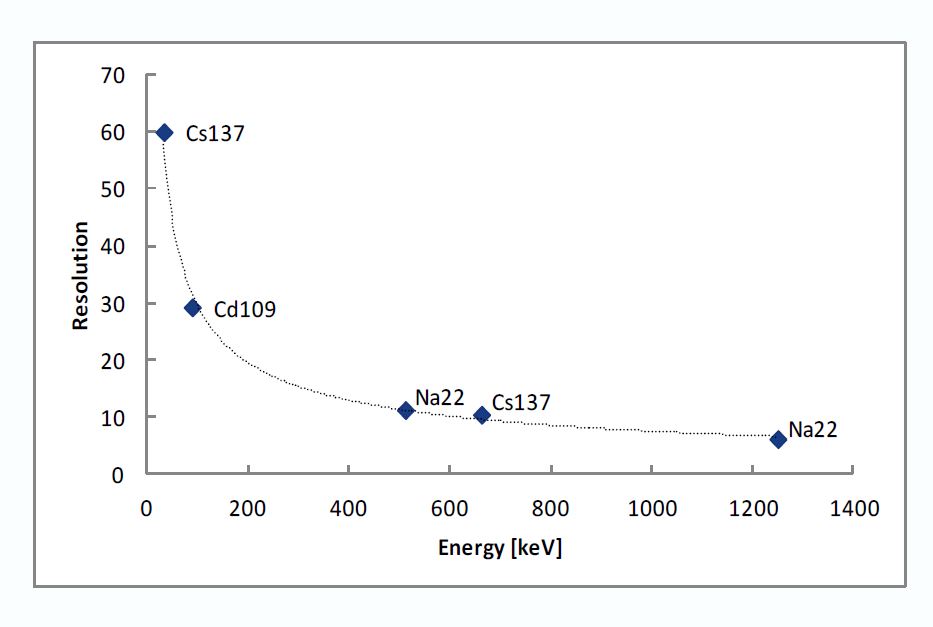| Difficult | Execution Time | Data Analysis | Radioactive Sources |
|---|---|---|---|
| No | Yes |
Hardware setup
This experiment guide is referred to the SP5600EMU educational kit. If you don’t have this kit, choose your own from the following list to visualize the related experiment guide:
Equipment
- SP5600EMU – Emulation Kit
- Additional Gamma Radioactive Source

Purpose of the experiment
Recording and comparing the γ energy spectra of several radioactive sources is the main goal of the experiment. The photo-peaks are used to calibrate the response of the system and to measure the energy resolution.
Fundamentals
Linearity and energy resolution are the main figures of merit of a spectrometric system. In the proposed experiment, based on a scintillating crystal coupled to a Silicon Photomultipliers, deviations in the linearity may be due to the sensor or the front-end electronics saturation. The student is guided through the analysis of the response curve using a series of isotopes up to the MeV energy by a 60Co source and to disentangle the different effects. At the same time, the energy resolution of the system is measured by the width of the photo-peaks and the results compared to what is expected by the fluctuations in the number of detected scintillation photons, the system noise, the sensor stochastic effects, the intrinsic resolution of the scintillator.This is following an initial activity on the optimization of the operating parameters by an analysis of the photo-peak position and the resolution for a single isotope.
Carrying out the experiment
To perform the experiment connect the DT4800 output to the input channel of the MCA DT5770 and use the DT4800 GP0 as digitizer “trigger IN”. The DT4800 Control Software Interface allows to emulate signals from a real energy spectrum linked to different radioactive sources with variable activity.

Block diagram of the experimental setup that makes use of the “Emulation Kit”
Results
By fitting the photo-peaks with a Gaussian curve, the system linearity as a function of energy is verified. The peak widths is determining the energy resolution. At more advanced level, the interpretation of the results accounting for the system properties may be performed.

Energy Calibration

Energy dependance of the system resolution


